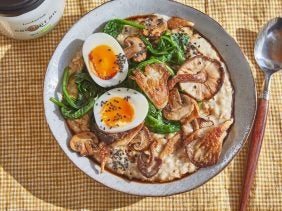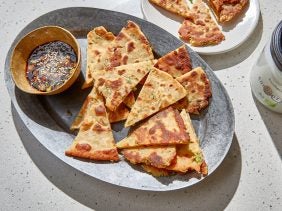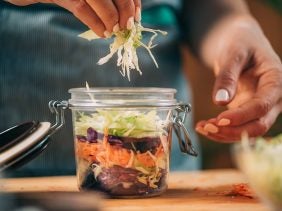Follow your gut with these 10 probiotic foods & recipes
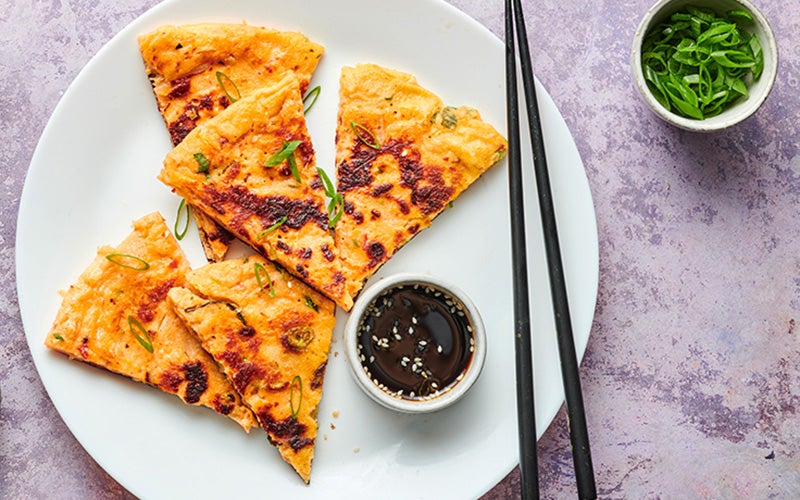 ©foodspring
©foodspring
Kefir, sauerkraut, kombucha – what do these have in common? These foods all contain beneficial microorganisms for healthy intestinal flora. Let’s dive into what probiotics are and which probiotic foods you might want to stock up on. Plus: the best probiotic recipes!
What are probiotic foods?
The term “probiotics” comes from the Latin “pro bios,” which translates to “for life.” The World Health Organization defines probiotics as “live microorganisms that provide health benefits to humans when consumed in sufficient amounts.”
In other words, probiotics are strains of bacteria suitable for consumption that occur naturally in the gut. When consumed, these living bacteria are said to help maintain the balance of the intestinal flora and thus have positive effects on digestion, among other things. Probiotic supplements are a great addition to your routine, but consuming live and active cultures from probiotic food is the best way to support your gut health.
Probiotic foods – such as yogurt, sauerkraut, and kimchi – contain plenty of these living microorganisms, which are produced by the fermentation of these vegetables or dairy products. There are around 500 different probiotic bacterial cultures, the best known and most important of which are lactic acid bacteria (Lactobacillus).
Tip: Read more about fermentation and fermented foods here!
Probiotics vs. prebiotics: What’s the difference?
You’ve probably also heard the term prebiotics. Here’s the difference:
- Prebiotic foods provide the food for the gut bacteria, rather than the bacteria themselves. They nourish the microorganisms of the intestinal flora and thus promote their growth. These foods are characterized by a high fiber content. For example: legumes, oatmeal, bananas, berries, asparagus, leeks, and onions are all great prebiotic sources.
- Probiotic foods replenish the intestines with healthy bacterial strains to support the balance of intestinal flora. For example: yogurt, kefir, sauerkraut kimchi, pickles, and kombucha are some of the most common and popular probiotic foods.
Some foods such as kefir and sauerkraut are both probiotic and prebiotic. The technical term for this is synbiotic.
Are fermented foods and probiotic bacteria particularly healthy?
You read it everywhere: probiotics are supposed to promote health, in particular by strengthening the intestinal flora and the immune system. However, there’s no clear evidence for this, so no one is making any sweeping health-related statements about probiotic foods. It remains unclear how frequently you’d have to eat fermented foods and whether the beneficial bacteria actually reach your gut. The steps of fermentation are also important. Exposing the food to high heat after fermentation, for example, often kills beneficial bacteria before you have the chance to consume them.
What is certain, however, is that the human intestine is home to around 500 different strains of bacteria. This is also referred to as the microbiome, which is made up of trillions of intestinal bacteria. These are all essential and perform crucial tasks in the body, like aiding digestion or the immune system.
Read more about healthy eating here!
10 probiotic foods
Want to give your intestinal flora a boost? It doesn’t hurt to integrate the following probiotic foods into your diet in moderation.
Important: Always make sure that these products are fresh. Pasteurized foods, i.e. foods that have been strongly heated to preserve them, don’t contain living microorganisms.
#1 Yogurt
Yogurt is probably the best known of all probiotic foods. It is made from milk with the addition of lactic acid bacteria. The fermentation of the lactic acid thickens the milk to give it a long shelf life. Incidentally, the fresher the yogurt, the higher the content of lactic acid bacteria.
#2 Kefir
Kefir is a thick sour milk product made from cow’s, sheep’s, or goat’s milk that contains even more probiotics than yogurt. Unlike yogurt, it’s not only lactic acid bacteria that are used to ferment kefir, but also kefir grains – a symbiotic culture that contains both bacteria and yeast. In addition to lactic acid, alcohol and carbonic acid are also produced as decomposition products, which is what gives kefir its special taste.
Another advantage of this fermented milk drink: traditional kefir is lactose-free, so you can enjoy it even if you have a lactose intolerance.
#3 Cheese
Some cheeses contain living microorganisms, which makes them probiotic. Gouda, Gruyère, Parmesan, Mozzarella, and Cheddar fit the bill. Producing these cheeses requires milk, rennet, and various bacterial cultures, which in turn produce lactic acid. This results in fresh cheese and whey, which are processed into cheese through additional steps. In addition to probiotics, cheese is rich in calcium and protein.
#4 Sauerkraut
Sauerkraut is made by fermenting cabbage. The fermentation process makes it easier to digest, and it also contains lots of vitamin B12, vitamin C, and fiber, in addition to essential probiotics.
#5 Pickles
Pickles are cucumbers that are preserved in a liquid brine made of water, herbs, sugar, and salt. Thanks to this kind of fermentation, they are rich in probiotic lactic acid bacteria and have a particularly long shelf life.
Note: Most pickles found in the supermarket don’t contain probiotic bacterial cultures, because they aren’t made by lactic acid fermentation, but instead by adding vinegar.
#6 Kimchi
Kimchi, which is a popular side dish in Korean cuisine, is made from fermented, spicy cabbage. Fresh, i.e. unpasteurized, canned kimchi is the Asian equivalent of sauerkraut and is rich in probiotic microorganisms.
#7 Apple cider vinegar
To make apple cider vinegar, apples are fermented into cider and then, in the next step, into vinegar. The lactic acid bacteria produced from the fermentation is easily absorbed by the intestines.
Tip: Try to buy only high-quality, natural apple cider vinegar. You can recognize it by its cloudy, slightly brownish color.
#8 Miso and miso paste
Miso is a well-known spicy paste from Asian cuisine. It’s made by fermenting soybeans and wheat, barley, or rice. In addition to probiotic bacteria, this fermented soybean product contains a lot of protein, B vitamins, iron, and calcium. Miso soup is one of our favorite probiotic rich foods
#9 Tempeh
Tempeh is a popular meat substitute from Indonesia that is made from fermented soybeans, similar to tofu. In addition to valuable lactic acid bacteria, tempeh contains tons of protein, magnesium, and potassium.
#10 Kombucha
Kombucha is a fermented drink made from herbal or black tea, sugar, and kombucha yeast culture called a SCOBY. Its fermentation produces lactic acid, acetic acid, carbonic acid, and alcohol. This probiotic drink tastes similar to lemonade and may contain caffeine, depending on the type of tea used.
Tip: If you want to stick to a healthy diet, keep an eye on the sugar content when buying fresh kombucha.
Probiotic recipes
In the mood for a delicious probiotic meal? Whether it’s breakfast, lunch, dinner or a healthy snack in between meals, here are our favorites:
Protein Kimchi Pancakes
You’ll love them, our crispy, tangy, slightly spicy probiotic kimchi pancakes. Kimchi is delicious and versatile. And best of all, thanks to our convenient baking mix, you can make these fluffy Asian pancakes in just a few minutes. Is your mouth watering already? Here’s the recipe!
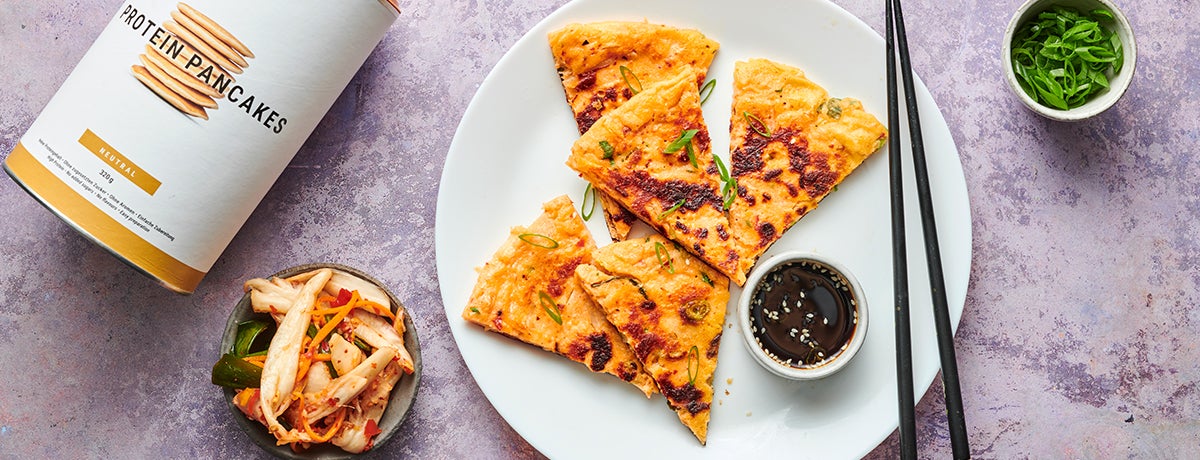
Fried Rice with Marinated Tempeh and Peanut Sauce
Crispy fried tempeh meets hearty rice and plenty of crunchy vegetables in this recipe. To top it off, this dish is garnished with delicious peanut sauce. The ideal probiotic meal for anyone who wants to eat healthy and keep it speedy in the kitchen.
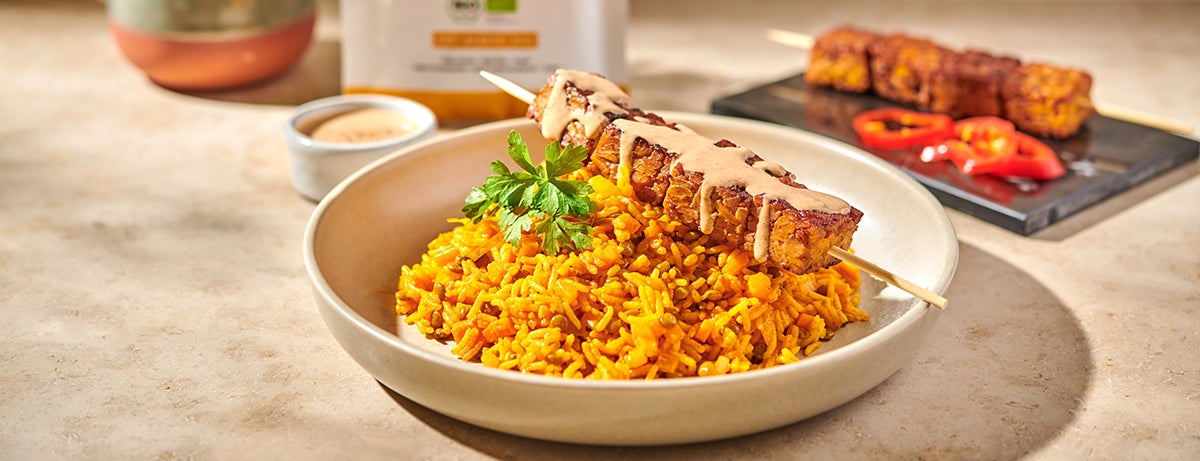
Savory waffles with mozzarella
Waffles can be more than just sweet breakfast treats. The proof is this recipe for savory waffles with mozzarella. The cheese contains probiotic bacterial cultures, making it a powerful helper for your gut. Whether for brunch, breakfast, or as a sporty snack in the afternoon – these waffles are a treat and are a great recipe for our Protein Pancakes baking mix.
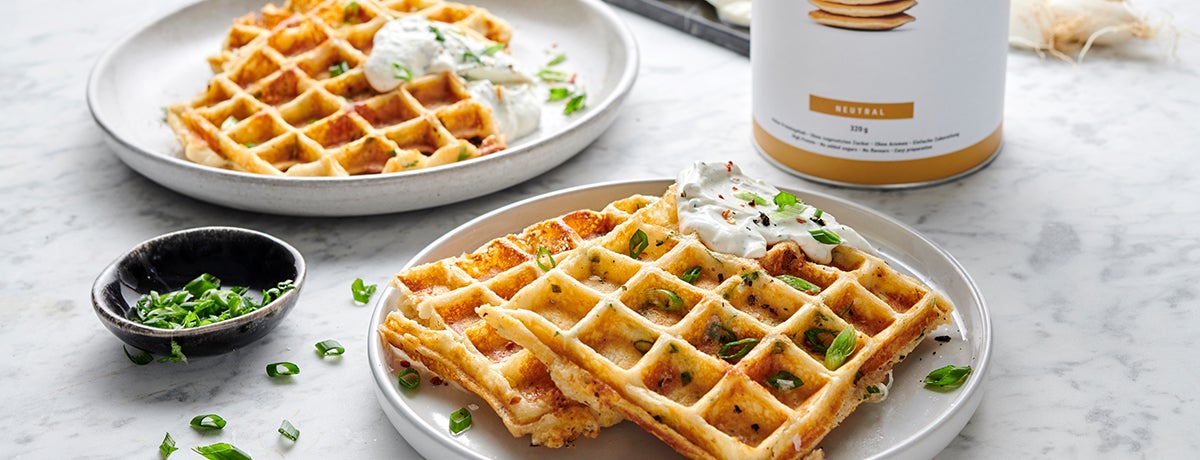
Summary
- Probiotics are live microorganisms suitable for consumption that also occur naturally in human intestinal flora.
- Probiotic foods contain many live bacteria or yeasts that could be beneficial to digestive and immune health.
- Probiotic foods are produced by fermentation.
- While prebiotics nourish intestinal bacteria, probiotics enrich the intestinal flora with microorganisms.
- The best known probiotic foods are yogurt, kefir, sauerkraut, kimchi, and pickles.
Sources for this article
We at foodspring use only high-quality sources, including peer-reviewed studies, to support the facts within our articles. Read our editorial policy to learn more about how we fact-check and keep our content accurate, reliable, and trustworthy.
- WHO (2002): Guidelines for the Evaluation of Probiotics, https://www.who.int/foodsafety/fs_management/en/probiotic_guidelines.pdf [06.09.2021].



























